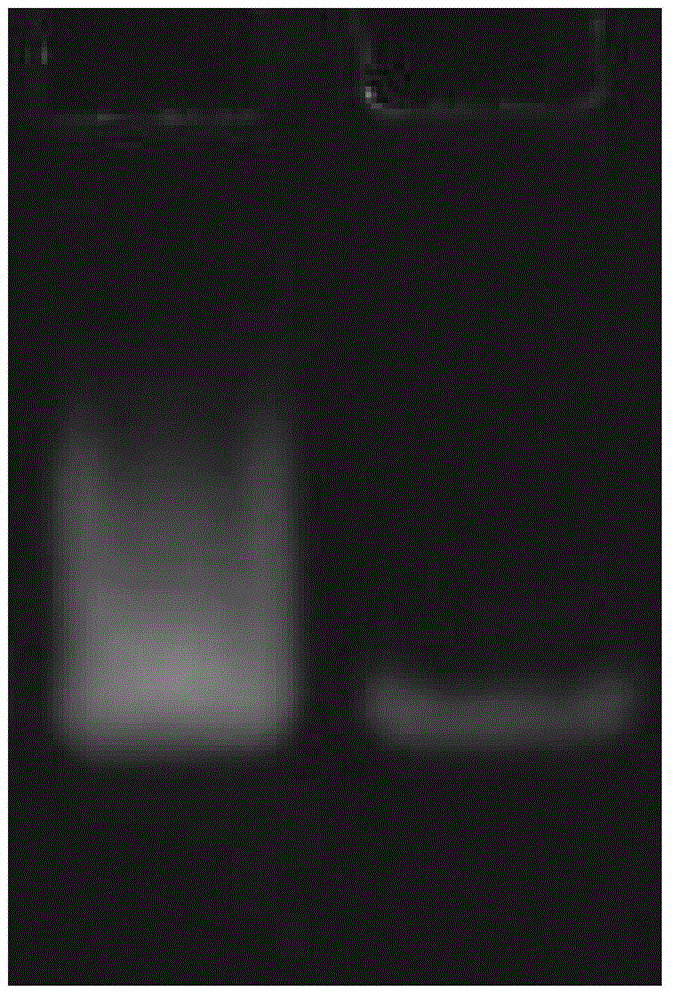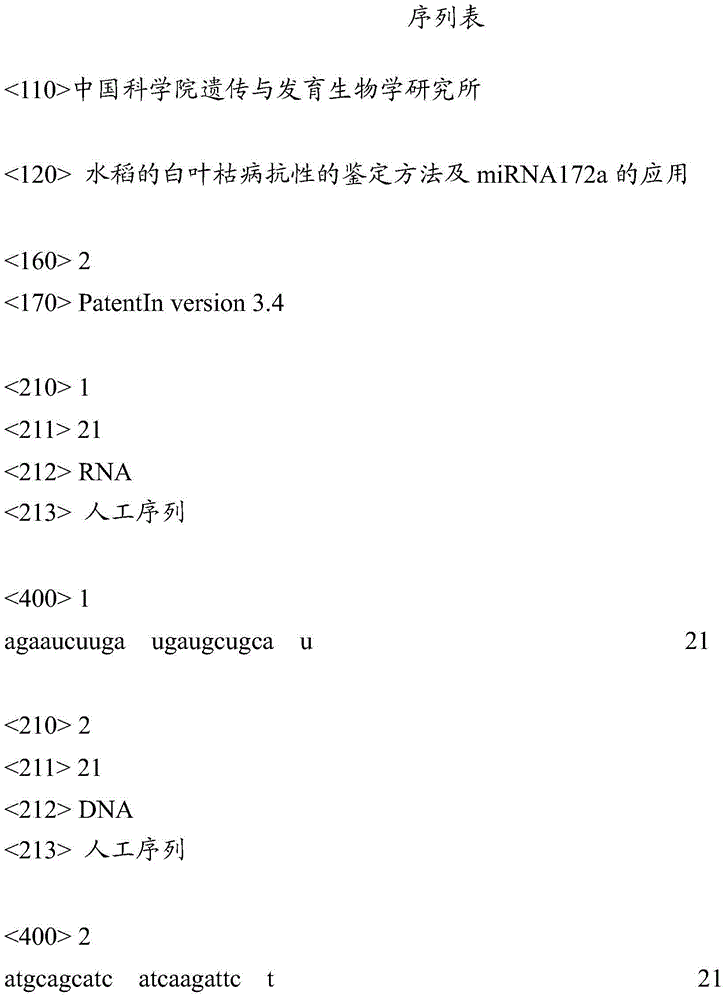Identification method of rice bacterial blight resistance and application of miRNA172a
A technology for bacterial blight resistance and identification method, which is applied to the determination/inspection of microorganisms, biochemical equipment and methods, etc., can solve problems such as inaccurate resistance to bacterial blight, and achieves that it is not easy to degrade and avoid misjudgment. , the effect of improving the accuracy
- Summary
- Abstract
- Description
- Claims
- Application Information
AI Technical Summary
Problems solved by technology
Method used
Image
Examples
Embodiment
[0024] In the present invention, rice miRNA is hybridized with a probe labeled with miRNA172a gene, and the result is detected by non-denaturing polyacrylamide gel electrophoresis, and the results of the rice to be tested and the susceptible rice are compared, and then judged. Whether rice is resistant to bacterial blight, the specific experimental process is as follows.
[0025] Susceptible rice: select non-bacterial blight-resistant rice seeds labeled 9311 with normal growth and no obvious pests and diseases on the surface.
[0026] Rice to be tested: select rice seeds with the label 9311 resistant to bacterial blight.
[0027] Among them, rice seeds resistant to bacterial blight have resistance gene Xa23.
[0028] Pre-treatment of seeds: Soak in 70% alcohol for 2 minutes, then wash twice with deionized water, soak in water at 30°C overnight, and germinate the seeds at a temperature of 30°C. After the buds grow out, sow In the seedling field, the management of the seedling...
PUM
| Property | Measurement | Unit |
|---|---|---|
| length | aaaaa | aaaaa |
| length | aaaaa | aaaaa |
Abstract
Description
Claims
Application Information
 Login to View More
Login to View More - R&D
- Intellectual Property
- Life Sciences
- Materials
- Tech Scout
- Unparalleled Data Quality
- Higher Quality Content
- 60% Fewer Hallucinations
Browse by: Latest US Patents, China's latest patents, Technical Efficacy Thesaurus, Application Domain, Technology Topic, Popular Technical Reports.
© 2025 PatSnap. All rights reserved.Legal|Privacy policy|Modern Slavery Act Transparency Statement|Sitemap|About US| Contact US: help@patsnap.com


